What Color Is Mold?
This post may contain affiliate links. Read our full disclosure.
Are you looking for information on a specific color of mold? Perhaps you are wondering why mold is different colors? Maybe you are even hoping to learn what color mold is the most dangerous. You have come to the right website because I am covering everything related to the various colors of mold. Let’s start with the basics.
Why Does Mold Come In So Many Colors?
There are several reasons mold may be a particular color. Some of these explanations are backed by science and other are more of a hypothesis when science couldn’t come to a firm conclusion. The reality is that there are likely many different things influencing the color of mold. Let’s take a quick look at why mold comes in so many colors
Mold Color Varies By Region
Scientists have long known that mold colors vary by region. The Pacific Northwest has more blue mold and green mold. The Amazon has a lot of orange mold. But why? The theory here is that mold takes on its pigment from its main nutrient (food) sources in the area.
Mold Color Is A Defense Mechanism
Nicholas Money, a fungal biologist at Miami University in Ohio, has studied how fungi cope when engineered without their normal melanin. “They’re pathetic,” he says. “Their list of disabilities is so long that it’s difficult to focus on any one problem.”
This supports the theory that color pigments work as a weapon or a barrier protecting against enzymes produced by amoebas in the soil. The color of mold even creates a toxic environment for other fungi (their equivalent of chemical warfare). This is different than the mycotoxins produced by mold.
Other studies have shown that melanized fungi are heartier than non-melanized varieties. Specifically, their color gives them protection against ultraviolet light, temperature extremes, and free radicals.
Other Reasons Mold Comes In So Many Colors
Aside from the reasons mentioned above, mold colors may vary based on their age and the conditions under which it grows. The color produced by mold is also a function of a variety of chemicals produced either as waste, cellular metabolites, or digestive agents (used to break down their food source such as plants or other types of materials).
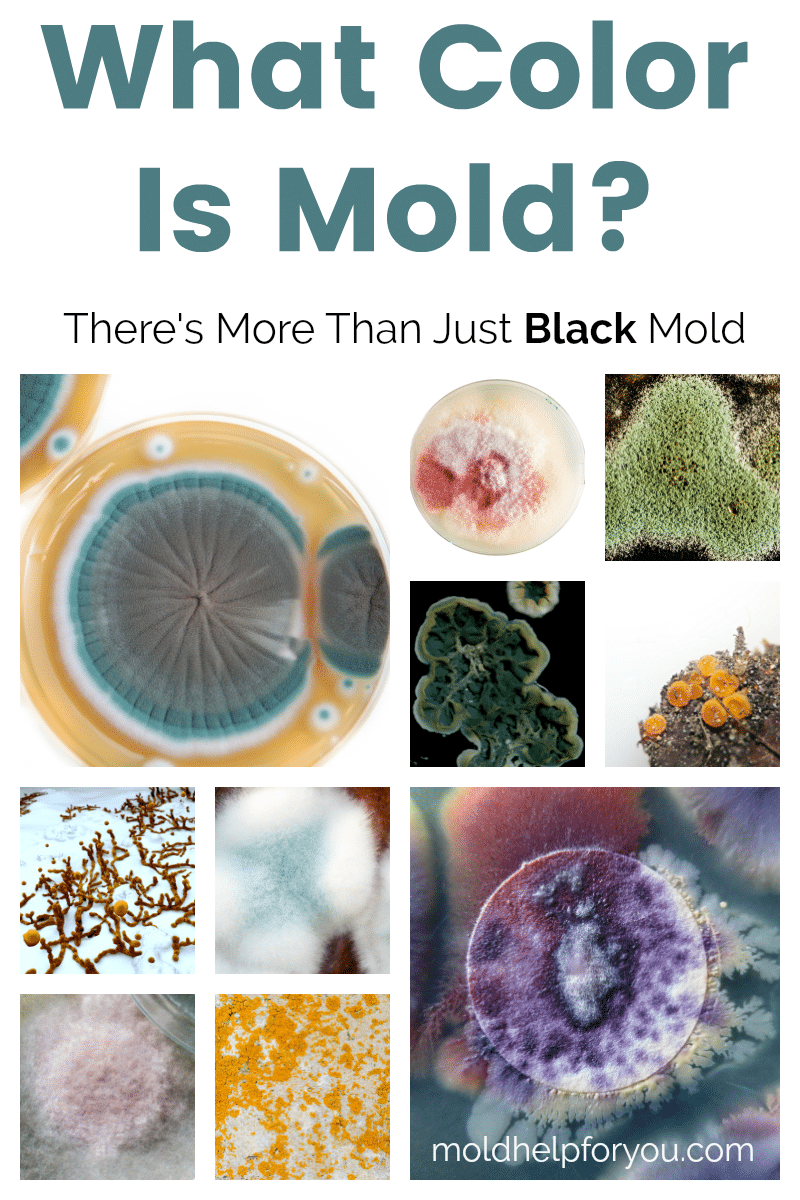
What Are The Colors Of Mold?
As you know, the various types of mold can come in a rainbow of colors. Although people are most familiar with black mold, green mold, pink mold, and white mold, there are at least 13 common color variations of mold with quite a few more that fall in between various shades.
The 13 common colors of mold are:
- Black Mold
- Blue Mold
- Brown Mold
- Green Mold
- Greenish-Black Mold
- Gray Mold
- Olive Green Mold
- Orange Mold
- Pink Mold
- Purple Mold
- Red Mold
- White Mold
- Yellow Mold
What is Multi-Colored Mold?
Even though there are 13 main colors of mold listed, mold is typically multi-colored. This is because most types of mold appear with a small array of color or colors, ranging from white at the edges to a dark or bright color in the center. The colors are the spores themselves, the second surrounding color is the body, and the white or gray are the filaments that explore and produce spores.
Before we look at each color of mold in detail, it is important to remember that the same mold type can appear in several different colors. This can make it very difficult to identify any particular type of mold by appearance alone. Mold testing becomes important in this case.
Types of Mold By Color
Black Mold
What Is Black Mold?
Black mold is the most feared mold around the world. Seeing just a speck of black mold can lead to panic as you wonder what to do next. You can thank the media for that. They decided that black mold is enemy #1.
Did you know that the term “Toxic Black Mold” has absolutely no scientific validation? It is a term made up by the media. True story.
The association was due to a statement made by the CDC in 1995 that suggested a link to a medical condition called Acute Idiopathic Pulmonary Hemorrhage (AIPH) or Pulmonary Hemoiderosis. Ten infants in the Cleveland, OH area were diagnosed with AIPH. One of those infants died as a result of the AIPH. All of the infants were identified as living in homes that had extensive water damage and mold; one of the molds being Stachybotrys chartarum. The CDC posed a question. Could high levels of volatile mycotoxins produced by molds be responsible for the infant’s death?
Shortly after this statement was printed additional information surfaced that proved the association was unfounded. The damage, however, was done. The American Academy of Pediatrics issued the statement about the toxic effects of indoor molds, then published documents highlighting the AIPH association first suggested by the CDC. Similar statements were also cited in congressional testimony and in the media.
Toxic Black Mold was born.
Guess what? Black mold is just another color of mold and is no more or less toxic simply because of its black appearance. Please don’t mistake this as meaning that black mold is not toxic. It can be and usually is. But don’t mistake black mold as being the only toxic mold.
What Mold Species Are Black?
Black mold is most often associated with the mold species Stachybotrys chartarum (due to its greenish black coloring). However, there are many species of mold that can be black in appearance.
How To Identify Black Mold
You can’t! Because other colors of mold may appear black, you need to look under a specialized microscope of send mold samples in for analysis to determine if you have black mold.
Is Black Mold Dangerous?
Typically yes. This is because most black mold turns out to be stachybotrys which has the ability to produce dangerous mycotoxins.
Where Does Black Mold Grow?
Black mold favors cellulose materials, such as cardboard, hay, paper, wicker, and wood. Furniture, cabinets, flooring, and even wallpaper are common locations for black mold, especially in the most humid rooms of a house (i.e. bathroom, kitchen, laundry room, basement).
The reason behind black mold’s notorious reputation is not only its capacity for quick maturation and rapid growth, but also its hardiness under harsh and changing environmental conditions. Basically, black mold is very difficult to completely remove.
What Does Black Mold Look Like?
Well, it looks black. Often times it look slimy or wet which is a good indication that it is stachybotrys.
Curious what black mold looks like? Here is a picture of black mold.
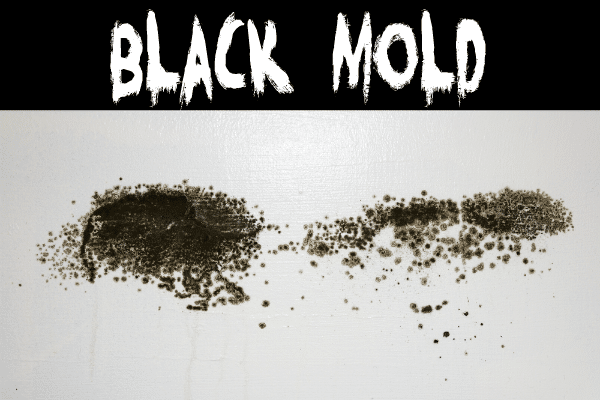
Blue Mold
What Is Blue Mold?
Aside from being another type of mold, blue molds are deliberately introduced into some cheeses and some kinds are used to produce antibiotics such as penicillin.
What Mold Species Are Blue?
Blue mold or bluish-green mold is usually some form of penicillium but it can be aspergillus as well.
How To Identify Blue Mold
Mold can start out as blue and if the area keeps getting wet, eventually Stachybotrys can start to eat the blue mold and it will become black or green. That is why blue will not always stay blue! Blue mold is usually pretty powdery.
Is Blue Mold Dangerous?
The fact that penicillin is made from the mold penicillium does not mean it is healthful to be around penicillium. Breathing the spores from the blue colored mold can cause health problems, including allergic reactions, inflammation of the lungs, and sinus infections.
Where Does Blue Mold Grow?
Blue mold is often found growing on food, but it can also be found growing on household materials like wallpaper, insulation, and carpeting that have been damaged by water. It can also be found on furnishings that have suffered water damaged, like couch cushions and mattresses.
What Does Blue Mold Look Like?
Curious what blue mold looks like? Here is a picture of blue mold.
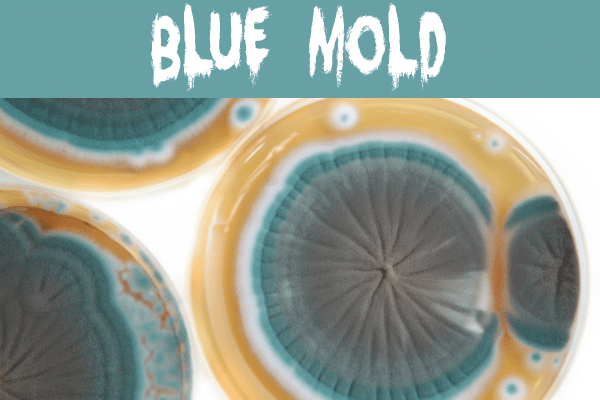
Brown Mold
What Is Brown Mold?
Brown mold is a general term for several species of mold that commonly grow on wood. Brown mold comprises those molds that are brown to tan in color.
What Mold Species Are Brown?
- Pithomyces Chartarum
- Aureobasidium
- Stemonitis
- Taeoniella
How To Identify Brown Mold
Brown mold appears as dark patches on hard surfaces. It may look like fuzzy growth or small moist blobs. All types of brown mold have an unmistakable unique musty smell.
Is Brown Mold Dangerous?
Not known to be as dangerous as some of the other molds, brown mold does still release spores which can cause coughing, sneezing and other allergic reactions. Brown mold can damage structures.
Where Does Brown Mold Grow?
This type of mold typically grows on plywood and other wood surfaces, but you can also find it in the bathroom. Window sills or between tiles are common places for brown mold.
Walls are also common habitat for brown mold to grow, especially in damp or dark spaces, such as an attic or basement.
What Does Brown Mold Look Like?
Curious what brown mold looks like? Here is a picture of brown mold.
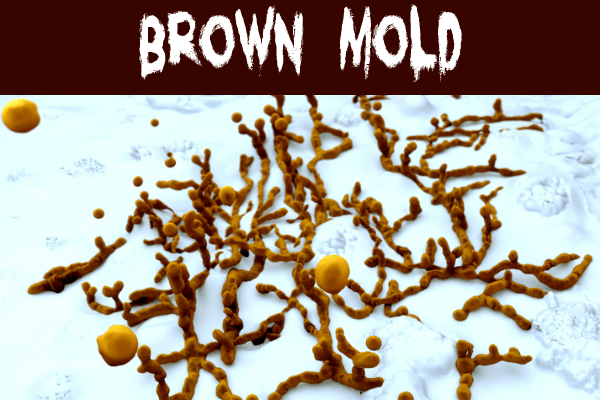
Green Mold
What Is Green Mold?
The term Green Mold does not refer to a specific type of mold. Green mold refers to thousands of species of fungi with spores that take on a greenish color.
What Mold Species Are Green?
The most common green mold species are:
- Aspergillus
- Cladosporium
- Penicillium
How To Identify Green Mold
It appears as soft and fuzzy or powdery and can have different hues of green.
Is Green Mold Dangerous?
Yes. Green mold produces mycotoxins which are considered to be a health hazard.
Where Does Green Mold Grow?
Green mold can basically grow anywhere in your home where a water problem may occur including in the crawl space, basement, bathroom, laundry room, attic, as well as in houseplant soil, the HVAC system, closets, carpets, and washing machines. Green mold also loves latching onto food and is frequently found on bread and starch heavy foods.
What Does Green Mold Look Like?
Curious what green mold looks like? Here is a picture of green mold.
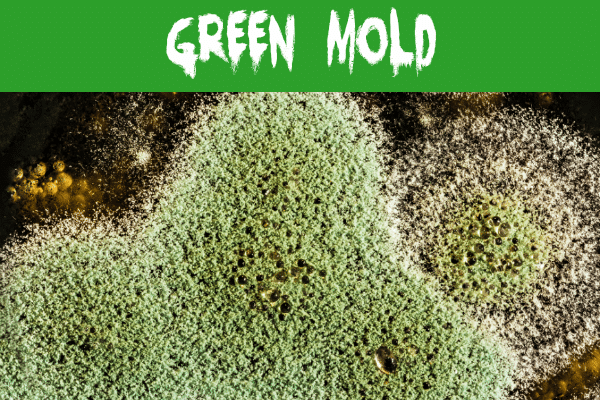
Greenish-Black Mold
What Is Greenish-Black Mold?
Believe it or not, greenish-black mold is the same thing as the feared toxic black mold discussed earlier.
What Mold Species Are Greenish-Black?
Stachybotrys chartarum
How To Identify Greenish-Black Mold
Much like black mold, you really can’t identify it by looking at it. You need to perform mold testing.
Is Greenish-Black Mold Dangerous?
Yes. It is one of the most dangerous molds and poses a significant health hazard to all living things due to its ability to produce deadly mycotoxins.
Where Does Greenish-Black Mold Grow?
Everywhere. There is no space immune to greenish-black mold growth. Where there is water there will be stachybotrys.
What Does Greenish-Black Mold Look Like?
Greenish-black mold is usually a gelatinous mold. It is slimy because of a wet layer on the top. However if a greenish-black mold colony’s water source runs out it can appear dry and powdery.
Curious what greenish-black mold looks like? Here is a picture of greenish-black mold.
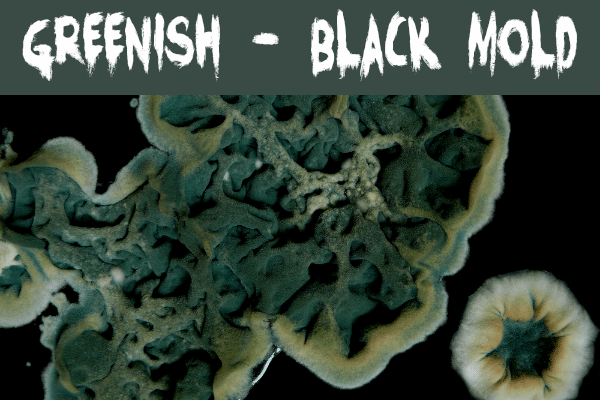
Gray Mold
What Is Gray Mold?
Gray mold is a necrotrophic fungus that affects many plant species, although its most notable hosts may be wine grapes.
What Mold Species Are Gray?
Botrytis cinerea
How To Identify Gray Mold
The symptoms of gray mold depend on the type of plant and environmental conditions, but generally spots that appear water-soaked will form on the leaves. These might appear white at first. These spots will then change color from gray to brown, eventually covering most of the leaf and causing it to wilt.
Under really humid conditions, grayish webbing may appear on the leaves. Eventually, all of the infected parts of the plant will be covered by a fuzzy gray growth, causing you to seemingly have gray flowers.
Is Gray Mold Dangerous?
While most people will not have a problem, botrytis cinerea can cause an allergic reaction. Known as “winegrower’s lung”, this is a form of hypersensitivity pneumonitis. It is often not lethal, but it can be very uncomfortable and may require treatment by a doctor to resolve it.
Gray mold is very dangerous to plants.
Where Does Gray Mold Grow?
Gray mold grows virtually everywhere plants are grown.
What Does Gray Mold Look Like?
Curious what gray mold looks like? Here is a picture of gray mold.
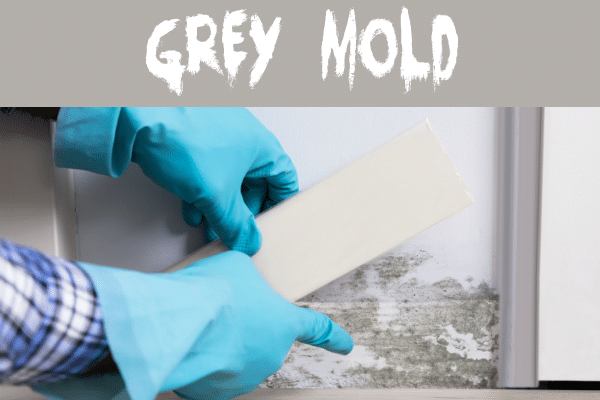
Olive Green Mold
What Is Olive Green Mold?
Olive green mold is a very common indoor and outdoor mold that is difficult to spot with the naked eye.
What Mold Species Are Olive Green?
These are common molds in the Cladosporium genus.
How To Identify Olive Green Mold
Typically you will find dark olive green spore clusters surrounded by gray and brown discolored splotches. It tends to form a combination of thick dark clusters but sometimes appears as a lighter olive green. Olive green mold is powdery in texture.
Is Olive Green Mold Dangerous?
Olive green molds are linked to skin, eye and sinus infections. Very rarely, they can cause brain infections (fungal meningitis), according to the CDC.
Where Does Olive Green Mold Grow?
Outdoors, they lurk on plant leaves. Indoors, they’re often found on walls, cabinets, and insulation and can grow on damp carpet too. Basically they can grow on a variety of surfaces. If you have houseplants you might find olive green mold on their leaves.
What Does Olive Green Mold Look Like?
Curious what olive green mold looks like? Here is a picture of olive green mold.
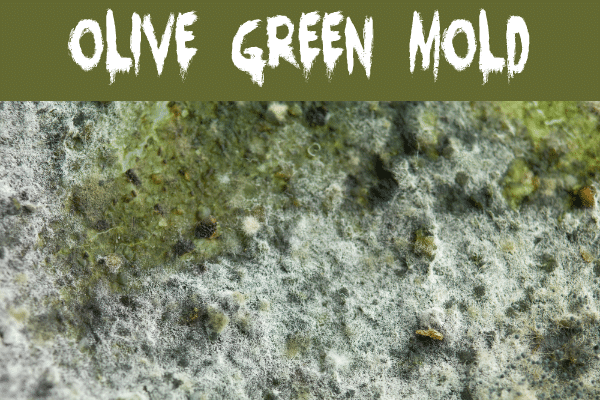
Orange Mold
What Is Orange Mold?
Orange mold is generally not a single type of species, but more like a colony of single-celled organisms. This mold may grow together with some other mold types, such as green mold or black mold, especially on food.
What Mold Species Are Orange?
Common species of orange mold include:
- Fuligo septica
- Aleuria aurantia
How To Identify Orange Mold
Whereas most molds have a spotty or furry consistency, orange mold usually appears with a slimy, spongy consistency. One of the most common species of orange mold is Fuligo septica, more commonly known as “Dog vomit slime mold”. Yes, it looks exactly like dog barf.
Is Orange Mold Dangerous?
Orange mold is not known to be life threatening but can cause significant damage to to house structures or spoil food storage.
Where Does Orange Mold Grow?
Orange mold lives in damp and humid areas like bathrooms and laundry rooms. It can grow inside the toilet. Wooden window sills are magnets for orange mold, as well as exposed structural beams in basements. Attics are also havens for orange mold growth because they collect warm air and moisture that rises from the rest of the house and they usually have exposed rafters. However it doesn’t grow indoors as readily as other molds.
Orange mold is one of the more brilliant colors of mold you can find in the wild. It is typically spotted eating rotted trees that have fallen in the woods and in mulch piles, so if you see bright orange mold inside your home, there is some serious rot and moisture going on.
What Does Orange Mold Look Like?
Curious what orange mold looks like? Here is a picture of orange mold.
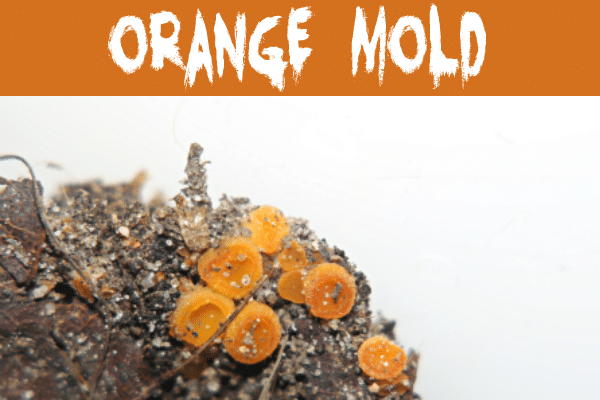
Pink Mold
What Is Pink Mold?
Pink mold is actually one of the more controversial molds. Some people believe it is not a mold but instead is a bacteria known as Serratia. But science has proven that it is indeed both a mold and a bacteria.
What Mold Species Are Pink?
The most common pink mold species are:
- Aureobasidium
- Fusarium
How To Identify Pink Mold
The Serratia bacteria is slimy in appearance and texture. Pink mold tends to be fuzzy instead.
Is Pink Mold Dangerous?
Yes. Fusarium produces dangerous mycotoxins. People with respiratory conditions such as asthma, as well as elderly people, children, and pets are at an even higher risk of pink mold-related health problems.
Aureobasidium is more likely to cause a problem when you’re exposed to it over the long term. It often develops in humidifiers and then circulates around the house, so it can float around for weeks before anyone notices. Exposure to this mold can lead to hypersensitivity pneumonitis, also known as “humidifier lung,” which causes a cough, difficulty breathing, and fever.
Fortunately, the pink Serratia is not directly dangerous to your health. Though it has been associated with lung and urinary tract infections, these occur in hospitals from respirators and catheters. However, it can become a risk in the home if pink mold gets into your contact lens case, at which point the contacts can infect your eyes through the cornea.
Where Does Pink Mold Grow?
Pink mold is mostly found in moisture-rich environments like bathrooms where it can feed off soap and shower products however it can be found anywhere.
Aureobasidium is a common bathroom mold, frequently found growing around damp window frames and on caulking. Fusarium is most often found growing on plants, including houseplants, but can also be found on wallpaper, carpet, and similar materials.
What Does Pink Mold Look Like?
Curious what pink mold looks like? Here is a picture of pink mold.
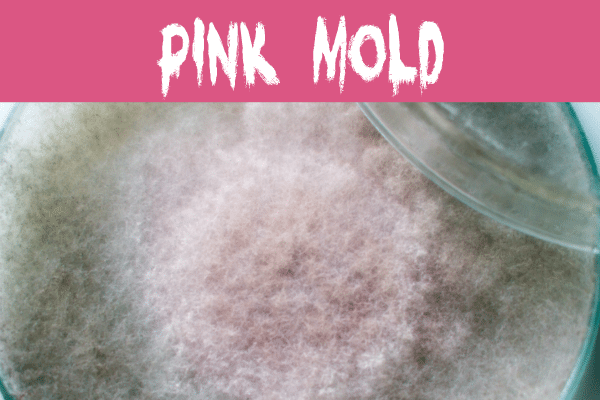
Purple Mold
What Is Purple Mold?
Purple mold isn’t as common as other colors of mold but it is still prevalent on building materials.
What Mold Species Are Purple?
There is no specific mold species that is known to just be purple. However, if you see purple mold on any wooden surface, it is most likely the Phanerochaete Crassa type.
How To Identify Purple Mold
It will be obvious! Purple mold is very purple. However, if it is really dark looking purple there is a possibly that it is really a bluish-black mold.
Is Purple Mold Dangerous?
It is generally considered very dangerous as it is closely associated to the toxic pink mold Fusarium which is known to produce mycotoxins.
Where Does Purple Mold Grow?
Purple mold is something that you can find behind walls, often underneath vinyl and wallpaper, and on wood. It mostly grows in areas hidden from plain sight.
What Does Purple Mold Look Like?
Curious what purple mold looks like? Here is a picture of purple mold.
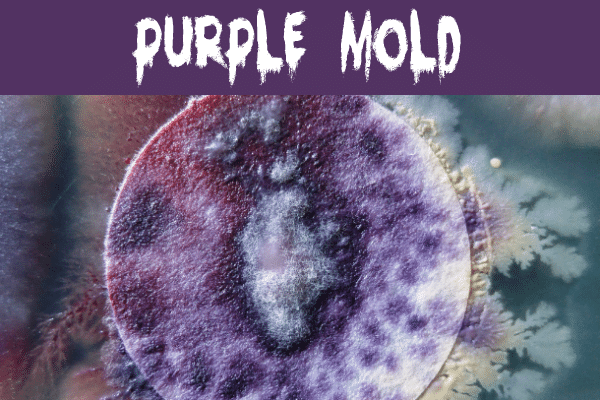
Red Mold
What Is Red Mold?
Red mold is easily mistaken for pink mold and vice versa. Red mold usually grows in tandem with other color molds.
What Mold Species Are Red?
Many molds can appear red as they grow and age. There isn’t one specific species of mold associated with the color red. However, Aspergillus is closely associated to mold that is red on building materials indoors. When red mold is found on food, it is usually Neurospora.
How To Identify Red Mold
Red mold is typically easy to spot because of its bright color. However, it may blend in to wall paneling because of other mold growth in the areas.
Is Red Mold Dangerous?
Yes, depending on the mold species it can pose a health hazard.
Where Does Red Mold Grow?
You will generally find red mold on building materials such as particle board or drywall. It can also grow on spoiled food.
What Does Red Mold Look Like?
Curious what red mold looks like? Here is a picture of red mold.
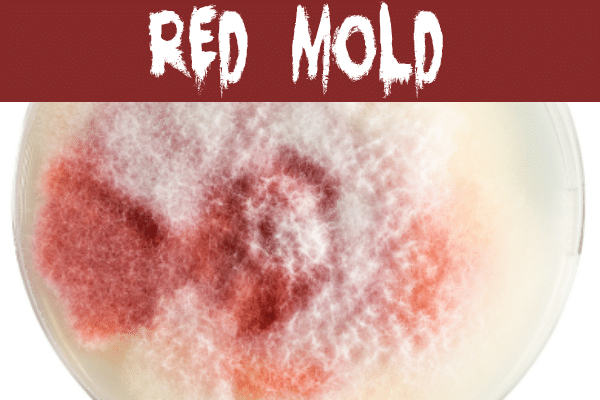
White Mold
What Is White Mold?
Pure white mold could be almost anything. White is actually the default spore-free color of most molds and the exploratory tendrils of a mold are almost always white before they produce and release spores. This means that very new mold will almost always appear to be white.
What Mold Species Are White?
Almost any mold species can start out white or be white through maturity. The most common species of white mold found indoors are:
- Aspergillus
- Cladosporium
- Penicillum
How To Identify White Mold
White molds are mostly powdery and hard to identify since they blend with the material they grow on. When white mold grows on furniture, it can take on a 3-D appearance only seen by shining a light against the wood grain.
Sometimes, people confuse white mold with mildew, which may also have a white appearance. However, mildew rarely grows on surfaces other than plants and doesn’t destroy materials. White mold, on the other hand, penetrates the surface of porous materials like wood or drywall and can ruin them.
It’s also common for people to confuse white mold with a substance called efflorescence. It’s a type of salt deposit caused by salty water which seeps through concrete, brick or stone. When the water evaporates, it leaves behind a white crystalline substance that looks similar to white mold.
Is White Mold Dangerous?
It absolutely can be depending on the species. In fact, white mold can often be more dangerous because it is difficult to see with the naked eye and may go undetected for longer periods of time.
Where Does White Mold Grow?
White mold can be found on virtually any material and thrives in dark and damp areas. Some of those vulnerable areas include framing in the attic, basement walls, and exposed dirt in crawlspaces. White mold often grows on shoes and leather items. It grows easily on carpeting and in cars.
White mold can also be found on food that has started to go bad.
What Does White Mold Look Like?
Curious what white mold looks like? Since it is hard to find pure white mold without using a black light, here is a picture of white mold around the edges of a bluish mold.
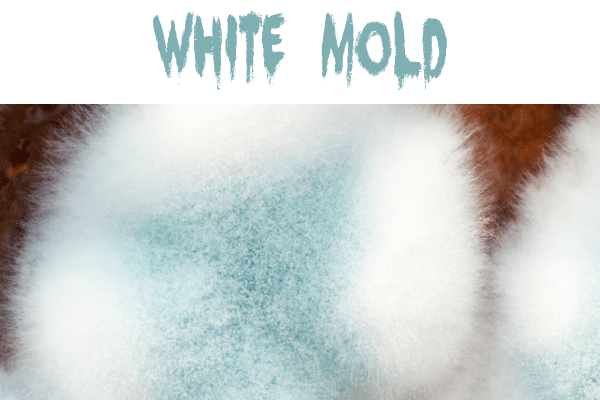
Yellow Mold
What Is Yellow Mold?
Yellow mold is most notably known as slime mold. However, slime mold is not typically found indoors. Yellow indoor mold is simply referring to the appearance of the mold itself.
What Mold Species Are Yellow?
The most common species of yellow mold are:
- Aspergillus
- Serpula lacrymans
- Meruliporia
- Mucor
- Epicoccum nigrum
- Geomyces pannorum
How To Identify Yellow Mold
Yellow mold typically looks like a willowing yellow tapestry.
Is Yellow Mold Dangerous?
It depends on the species but yes, it can be hazardous to health.
Outdoor yellow slime mold can be highly toxic and should be removed immediately. Don’t make the mistake of touching it or inhaling it as it can lead to several health problems. If you spot yellow mold that is a very bright variant of the color (and so easily detected) chances are this is the highly toxic variety.
Where Does Yellow Mold Grow?
It’s a very common household mold and can found virtually everywhere you’ve experienced water damage. However, yellow mold mostly grows on wooden surfaces, food materials, walls, bathrooms tiles, and in mulch.
Serpula lacrymans is sometimes referred to as house-eating mold because it feeds on wooden structures and literally eats away at them. It has caused the deterioration of many old wooden buildings and can also destroy wooden furniture.
What Does Yellow Mold Look Like?
Curious what yellow mold looks like? Here is a picture of yellow mold.
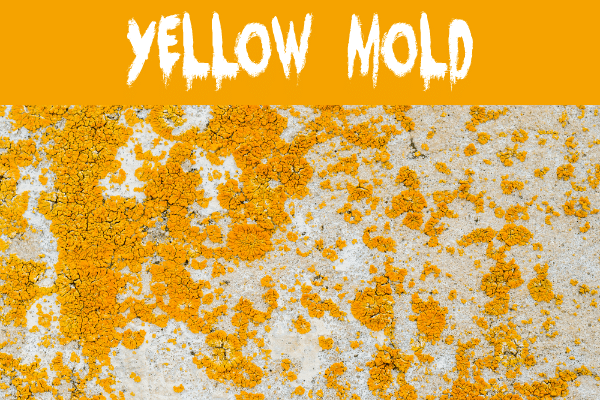
Did you like this post? Be sure to check out other posts in my Mold Facts series. You might also like to read more about The Types Of Mold as well as some Mold Prevention articles. Give a quick look to the Products I Love as well.
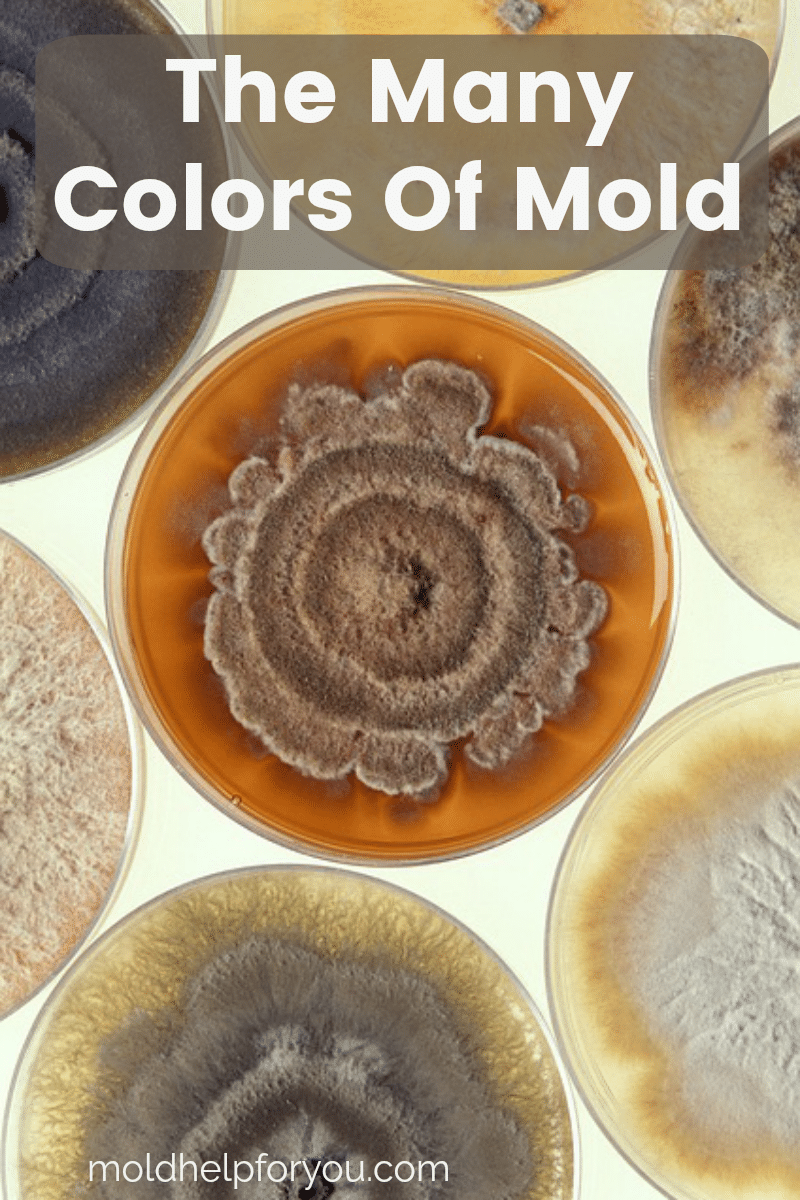

I have what I think is yellow/orange colored mold coming up through my Linoleum in the closet of the laundry room with no light. I have white plastic stacking shelves in the closet and now the orange color is showing on the shelves and under various cleaning bottles. I would like your opinion if I could send you some photos.
Yes, go ahead and send over some photos!
I am dealing with mold toxicity and recently found a rim of orangish slime on the top of the toilet tank water and also white slimy ‘floaties’. Do you have any suggestions of what it may be? We are on well water in west central MO. We have a whole house water purification system that went too long without having filters changed and a new UV light installed. Do I need to be concerned about mold growth in our interior waterlines? How should I clean the toilet tanks and and the mechanisms and keep them clean? Should I have the ‘guts’ in the toilet replaced?
I am sorry to hear you are dealing with this! I have an entire article on this: https://moldhelpforyou.com/toilet-mold/ It should answer all of your questions!